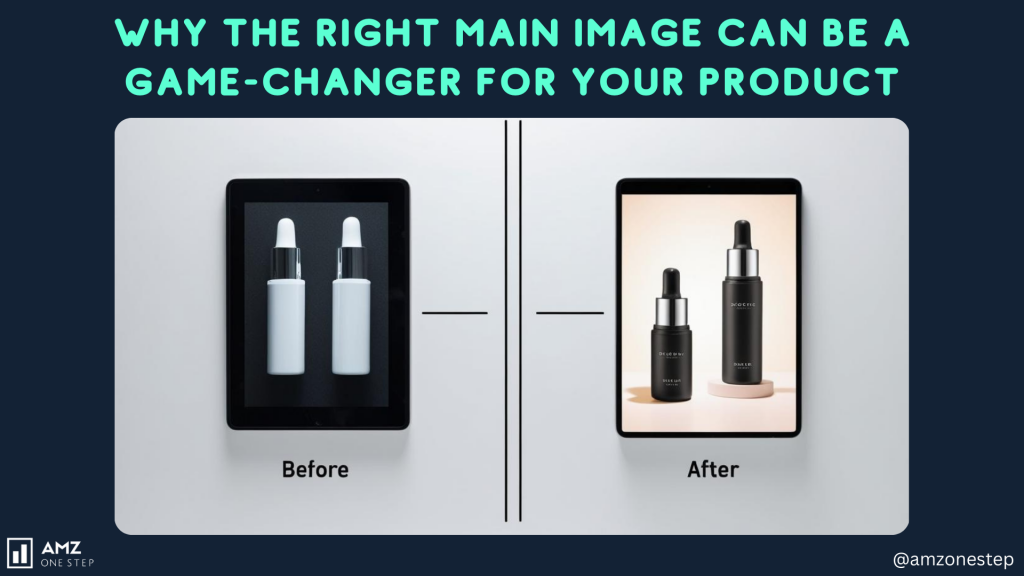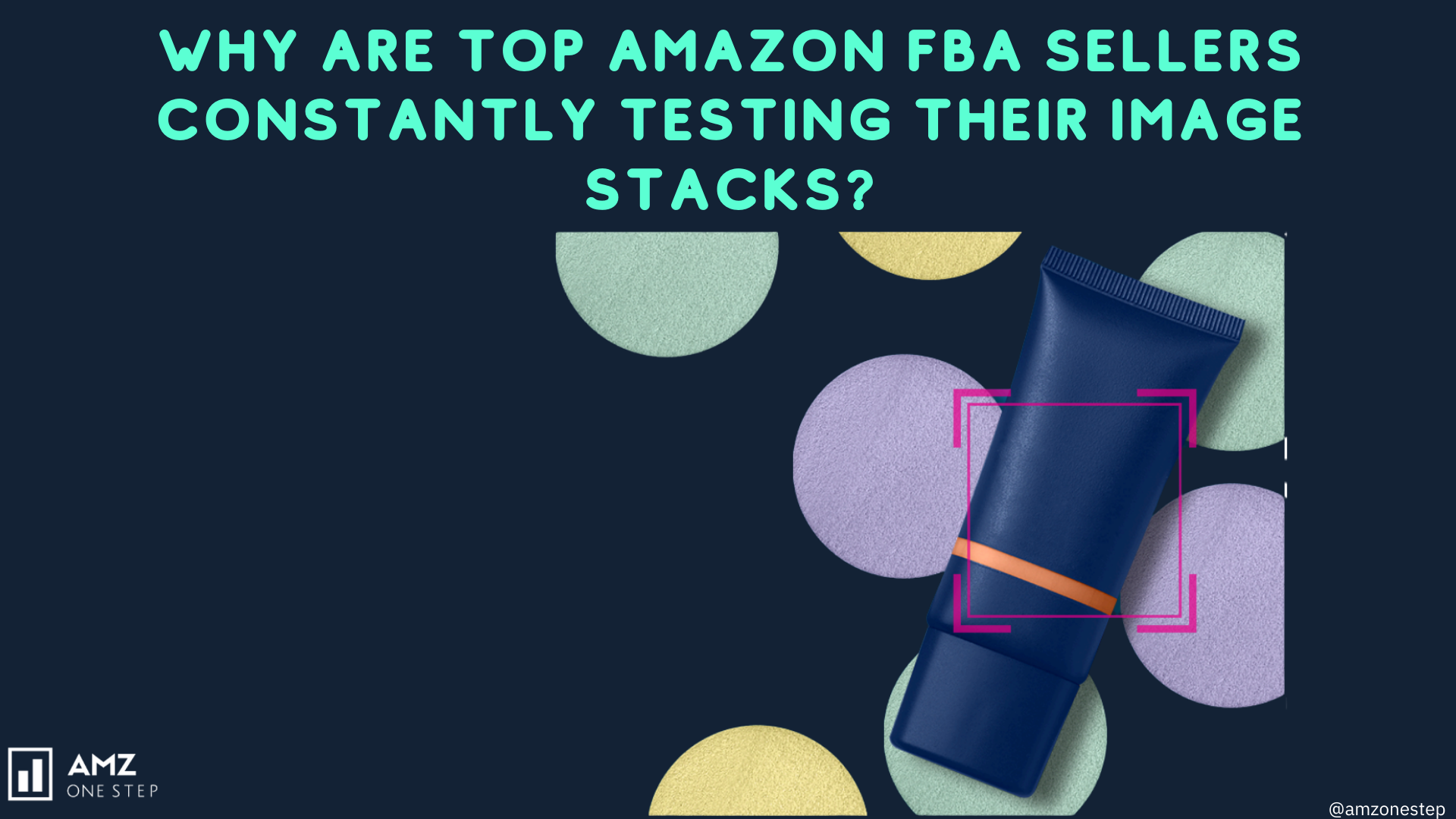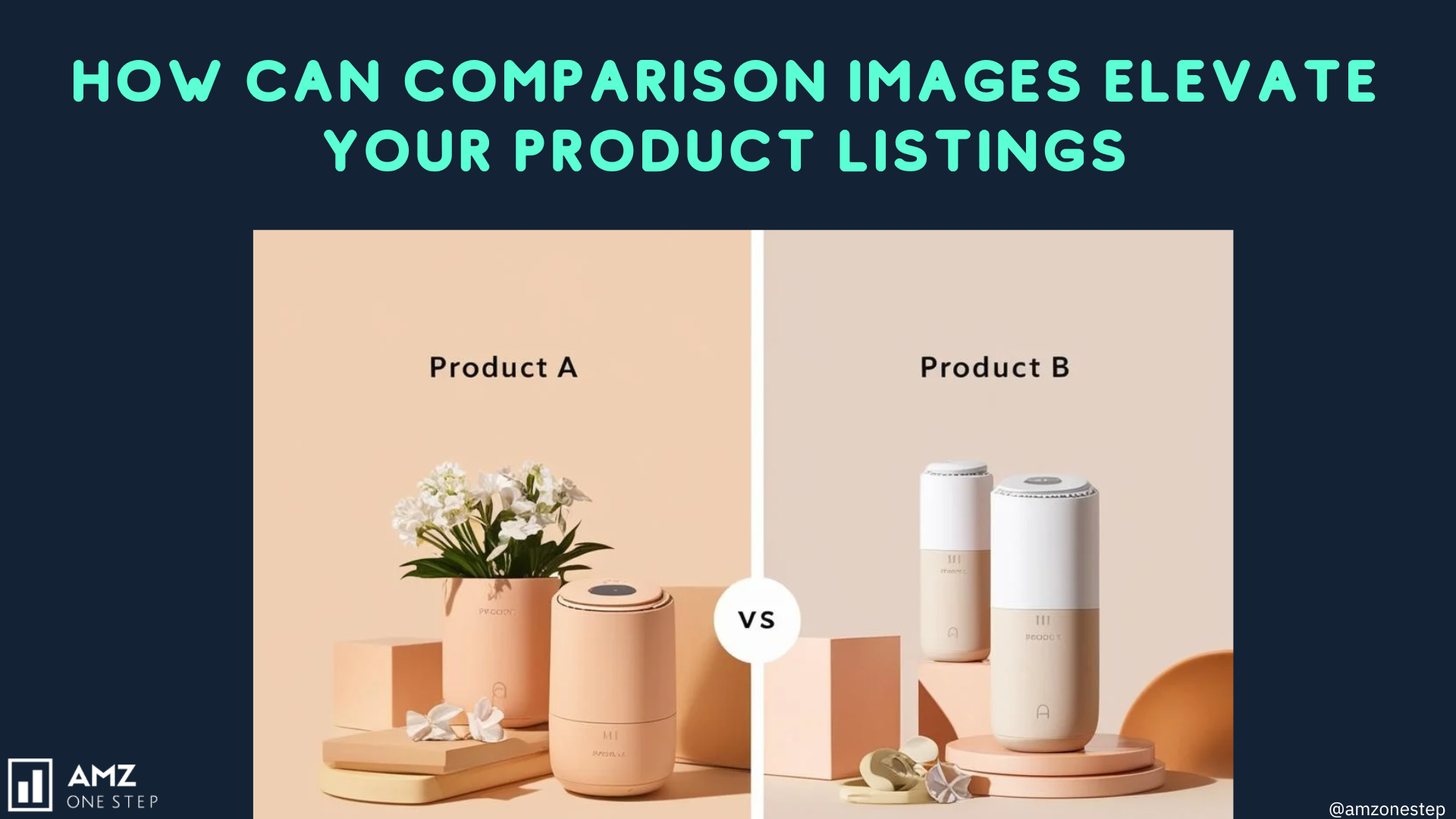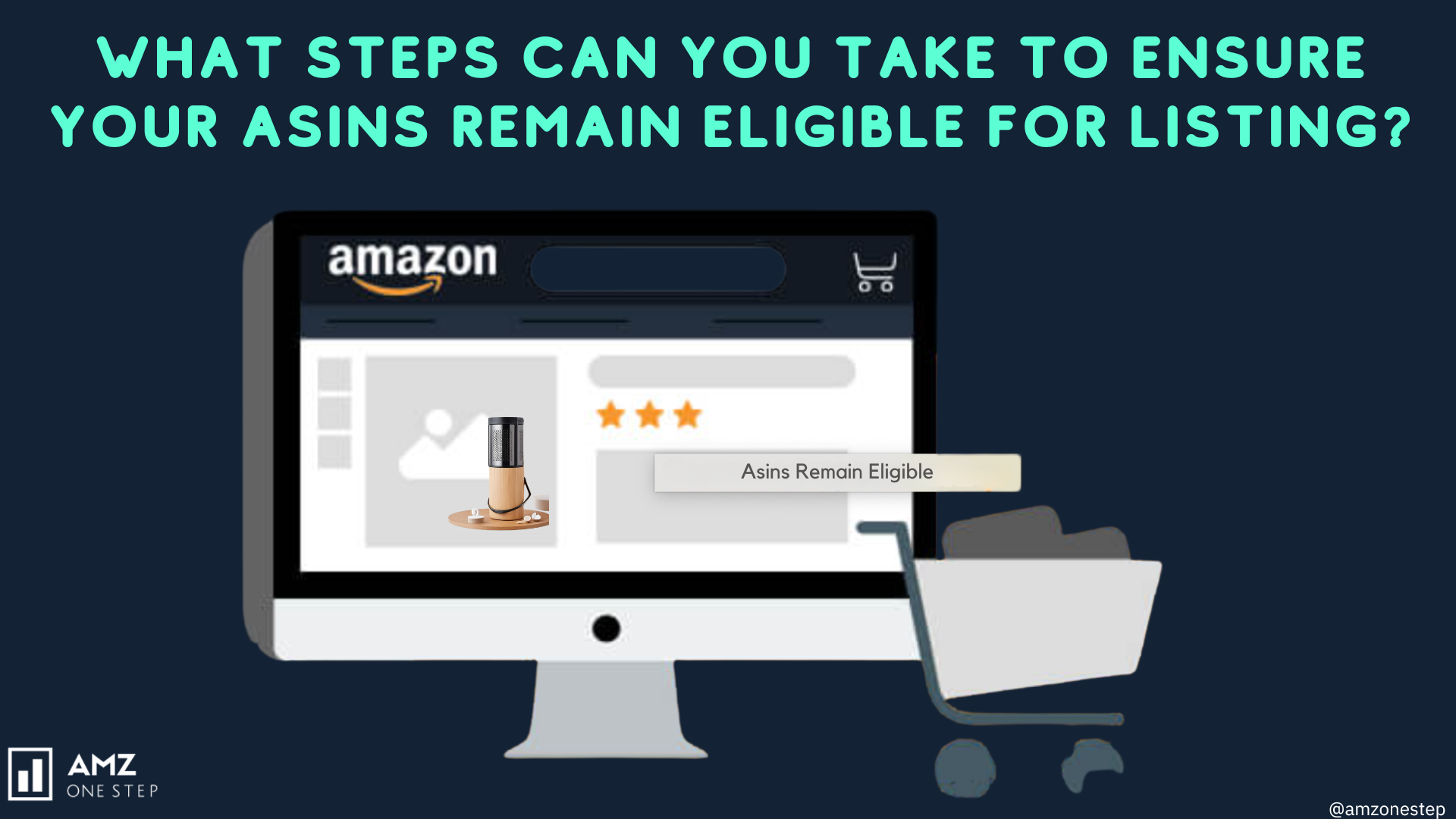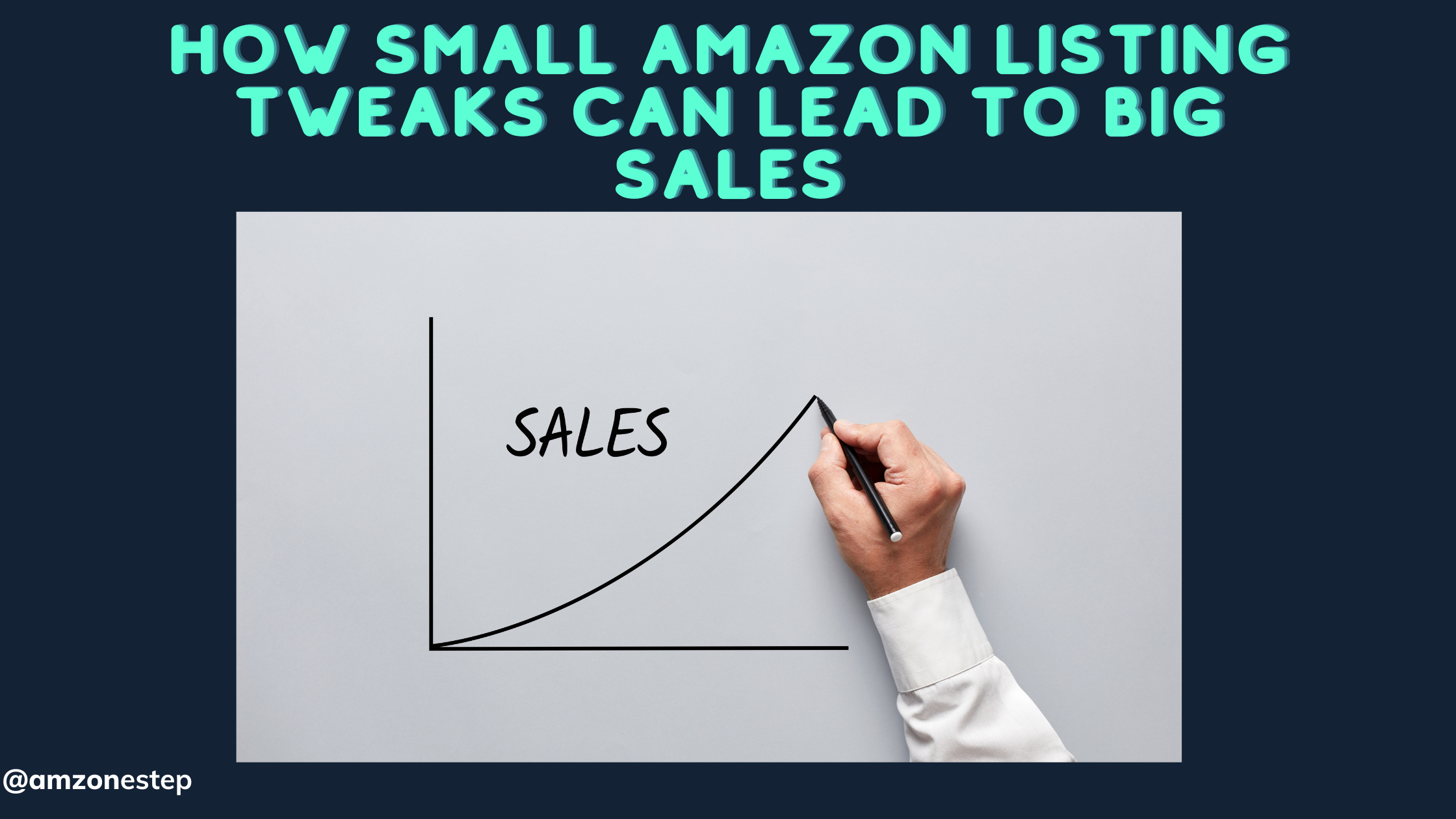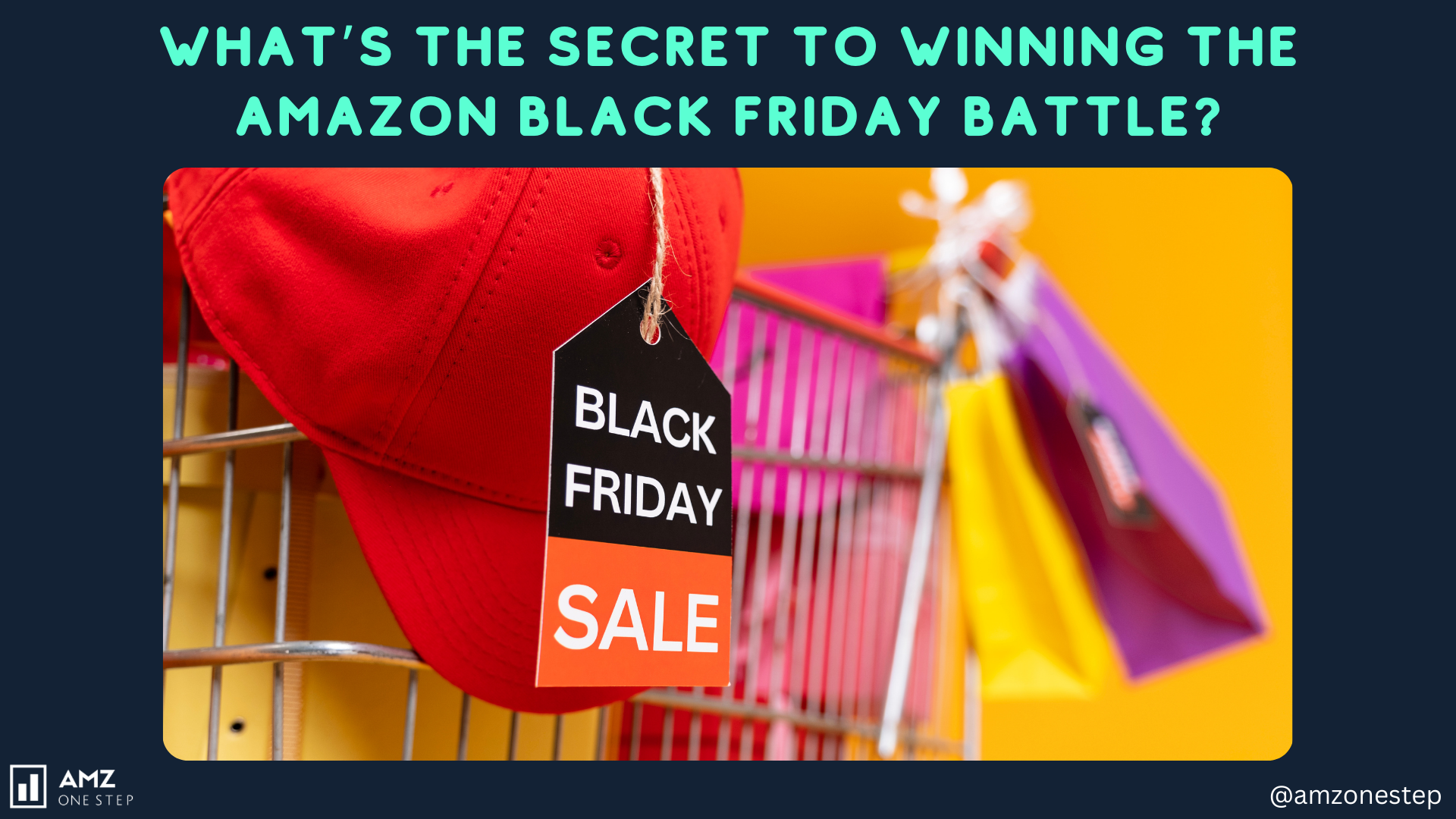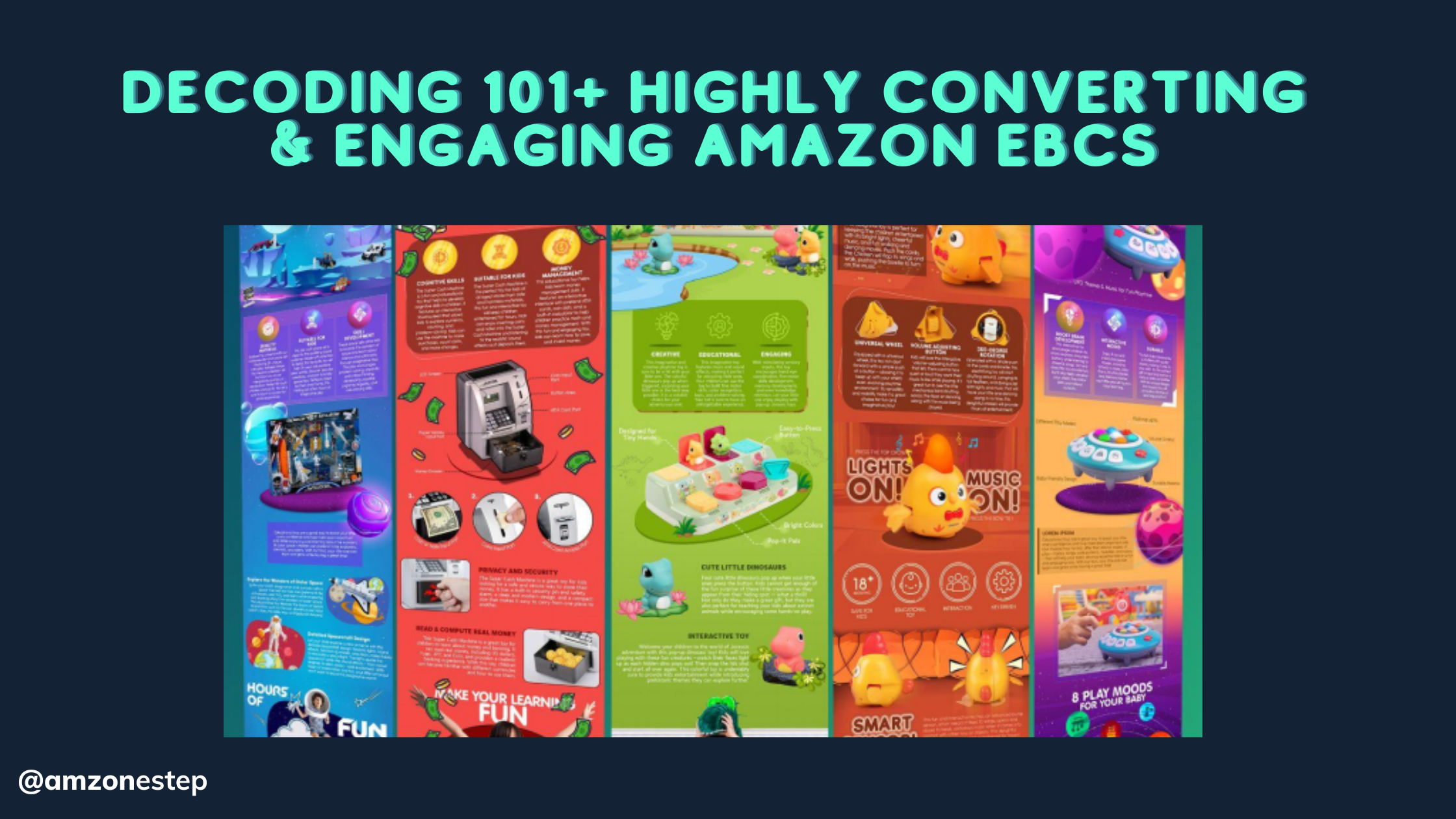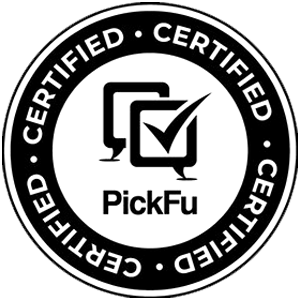As you look through Amazon’s virtual stores, many product pages compete for your attention. What separates the seen from the unseen? Most of the time, it’s the main picture. The main image of your product does more than show what it is; it’s also your quiet seller.
It sets the tone immediately, makes the first impact, and says much about your brand in seconds. An exciting picture not only gets people’s attention but also builds trust, shows worth, and turns clicks into sales.
The right main picture can make your listing stand out in a crowded market and turn casual viewers into loyal customers. If you’ve ever thought a picture wasn’t powerful enough, think again.
Read More: The Secret to Higher Amazon Sales: Labeling Your Main Image
Table of Contents
The Impact of Main Listing Images on Amazon’s Search Algorithm
Increasing the Click-Through Rate (CTR)
Amazon uses Click-through rate (CTR) as an important performance metric in analyzing your product’s relevance and attractiveness. A greater CTR indicates that your listing captures the interest of more customers, telling the algorithm that you have a product worth promoting on Amazon.
This is especially true for the main image, as it is typically the first item a shopper sees when browsing through search results. An attractive image can beat the competition and get clicks.
Take, for example, a company that sells fitness trackers. It started with a generic photo that doesn’t get noticed. By changing to an image of its tracker being worn on a wrist while working out, it got a 30% uplift in CTR (see below).
Likewise, a kitchenware brand got more engagement when it replaced a simple image of its knife set with a chef chopping vegetables.
The examples above show that great listing images on your main image can enhance CTR, which, through the rank and visibility of your product, can propel you forward on Amazon everyone.
Enhancing Brand Perception
Your hero image directly reflects the way a shopper perceives your brand. A polished, professional image represents trust, reliability, and attention to detail. A low-quality or blurry photo can convey the opposite, making your product seem untrustworthy.
Brand perception is everything in a competitive landscape where customers are spoilt for choice. For example, an individual selling beauty products went from amateur, low-resolution, dimly lit listing images to high-resolution/dimension/lighting that showed off their nice packaging.
The boost in customer trust also resulted in conversions. For example, a sports equipment seller started with basic product photos, then used listing images of their products being used in a gym, appealing to the aspirational nature of fitness junkies.
Quality visuals enhance your brand image, increase trust, and make your product much more attractive to customers.
Boosting Search Engine Optimization (SEO)
This means that the Amazon search algorithm favors listings with high metrics, such as clicking on a product and spending time on its product page.
If your main image is well designed, it can affect these metrics by enticing shoppers to click on your listing and read the product details longer.
A home décor merchant shared a picture of their coffee table in a complete design stage rather than just against a blank background to help customers visualize the product with their available space. It also meant that more time was spent on the page, causing more engagement.
Likewise, a pet supply store had dogs and cats playing with its products, which added an emotional touch and invited shoppers to stay.
These approaches show that eye candy draws clicks and improves SEO performance by making your product more available and legible in Amazon searches.
The following are Compliance with Amazon Guidelines
To keep your product listing active on the platform, you must follow Amazon’s stringent image guidelines. Failure to comply can result in a listing being suppressed, which is usually due to lost sales and a resulting drop in ranking.
To meet Amazon’s requirements, it needs a pure white background, no text or logos, and should focus solely on the product. In one instance, a toy seller found their listing suppressed because their main image had a watermark.
Once the image was modified to be consistent with Amazon’s required policy, the product became more visible and performed better in the search results.
Likewise, one fashion retailer ditched the mannequin shots for pictures of living, breathing models, improving consumer confidence in the merchandise in line with Amazon’s adherence.
Compliance means your listing will not be penalized, and your position in search results will not be affected, both of which are crucial for ongoing sales.
Being Unique with Product Differentiation
With numerous brands in the market, unique selling points act as customer magnets, attracting customers’ attention and causing them to buy your product.
Main Image: Your main image is a great opportunity to highlight your unique selling point, be it a new feature, a unique design, or an additional feature. As an example, a seller of coffee mugs showed a side-by-side of a standard mug next to theirs, highlighting its thickness and volume.
By creating visual contrast, their product garnered more attention, which led to greater sales. In a lifestyle image, one backpack brand called out anti-theft features aimed at buyers whose primary concern was safety.
Increasing Conversion Rates
An excellent main image not only persuades a passerby to click but also turns that click into a sale. The Amazon ranking algorithm favors listings with better conversion rates, so having a great main image can translate directly to more success.
One gaming mouse company saw the non-repetitive text from the main image extolling its customizable buttons and ergonomic design boost sales by 20%. Similarly, a skincare brand utilized the before-and-after carousel as its first image, which showcased the product’s efficacy, thereby gaining a potential buyer’s trust.
Overall, these examples showcase the need to align better what your main image depicts alongside the product value proposition and product functionality/usage. Leading with a strong hero image eradicates indecision, establishes confidence, and activates shoppers to go through to complete their purchase.
Encouraging Positive Reviews
The primary image sets expectations, and buyers are prone to leave a great review when their expectations are met or exceeded.
Ensure customers can access clear, high-resolution listing images that showcase angles and details. This makes customers make informed decisions , decreasing risk of disappointment and negative reviews.
A shoe seller, for instance, has uploaded its shoe image showing different angles of the product in high resolution so that buyers can view the details before buying it. This level of transparency produced rave reviews.
Similarly, a tech accessories brand showcased close-up photos of their phone case to convey clear expectations while providing some context, altering and reinforcing your expectations.
Displaying your listing images correctly and attractively gives customers a reason to purchase. If they do, not only are the complaints and returns reduced, but the happy customers leave positive reviews, which helps earn your product credibility and boost Rank, too.
Leveraging Seasonal Appeal
Modifying your top image according to seasonal trends or holidays will help you grab the attention of shoppers during driving periods. Using seasonal imagery targets emotions buyers might feel at the time of year and emphasizes the product’s relevance for a certain event type.
Example: One of the most prominent changes made by a gift company is updating its hero image to one using holiday packaging during the month of December, which resulted in record sales.
In another example, a sportswear brand incorporated warm backdrop details that showed how beach-friendly their products are to entice seasonal greenback shoppers.
Adjust your listing images so that they match perfectly with the pace of the season. This will make your product appealing to shoppers at certain times of year or in line with what is trending. This will be a good driver of traffic and sales during important shopping periods.
Gain Trust with Relevant Photos
Lifestyle photography lets shoppers picture themselves using your product, making it more real and enticing. These functional, scale, or style perspectives, added through contextual listing images, can be very convincing.
For example, a mattress company posted a picture of its mattress in a nicely set-up bedroom so people could visualize it in their homes. Likewise, a camping shelter provider showcased its tent set up in nature, trying to attract the adventurous spirit.
Contextual listing images like these help appeal to shoppers emotionally and lead to higher product purchases. When a potential buyer can see your product in action, you demonstrate its value and help build trust, which in turn converts more sales.
Helping Cross-Selling Opportunities
The main image can also gently cross-sell complementary items and invite customers to peruse the rest of the catalog. By fulfilling multiple needs, this solution improves customer satisfaction and raises average order value.
A cookware brand, for instance, put pots and matching kitchen utensils in the background so inspired shoppers would want to buy the whole set, just like the laptop seller who added a stylus and protective case to his photos, resulting in more bundle sales.
Showcasing complementary products alongside your hero product can drive additional sales and entice shoppers to explore further offerings from your brand—as long as the co-packaged products do not distract from the hero item.
Read More: How an Optimized Main Image Design Led to a 3x Revenue Surge on Amazon
How to Choose the Best Background for Your Amazon Main Image
Put the Simple White Background for the Compliance
And rightly so; all main listing images on Amazon need to have a pure white background. This minimalist background cuts the clutter and helps your product’s colors, textures, and shapes shine.
On top of that, a white background makes your listings look professional and ready with a polished look, which can help with your credibility and trustworthiness.
For example, a skincare label started using soft pink backgrounds consistent with its branding. That went against Amazon’s rules, and listings were suppressed.
They went on to switch back to using a clean white background, and not only was the listing restored, but it also experienced a CTR and conversion boost because it looked smarter and more professional.
- Tip: You can use photo editing software (like Photoshop or Canva) to create a pure white background that meets Amazon requirements, but this may result in a low-quality image on your product.
Place your Product in the Right Light
Because even simply using a white background, bad lighting, or wrong product placement can ruin your image. Proper lighting adds color and realism and brings your product to life to highlight its key features.
Give attention to the product by strategically placing it where your eyes will gaze directly when you go shopping.
For example, a stainless steel knife kitchenware brand used bright studio lighting to capture the knives’ metallic lustre. The lighting itself also helps the product stand out—if a potential buyer is searching for something specific, it helps it pop out, which in turn makes it more alluring.
- Pro Tip: Use natural or studio lighting to avoid shadows and put the focus on textures, colors, and details that separate you from your competition.
Think About Adding Shadows or Reflections
Simply adding a bit of shadow or reflection can make your product image look more three-dimensional and real while still being within Amazon guidelines and regulations. These effects add realism and make the product look like a real and professional product.
For example, a glassware seller has used a subtle image of the reflection of the wine glass on a white surface, adding an elegant, high-class touch to the photo. That simple refinement improved the product perception and proved beneficial with more clicks and more conversions.
- Expert Tip: You can also lay down a gentle shadow or reflection to complement the product on an image editing software such as Adobe Photoshop, but make sure it appears realistic and does not steal attention from the product.
Utilize Consistent Product Backgrounds
Using the same background for all your products helps create a branded look and feel. Shoppers seeing uniform backgrounds for different listings: Trustworthy, professional brands increase cross-selling and repeat purchases.
For example, a home decor brand sells lamps and vases. Trust in the brand increased as the products they offered stayed the same, with the only difference being the white background, building repeat customers and an established market position.
- Tip: Use the same background, lighting, and photographs for every product in your catalog to create listing images that match up.
Show Product Info with Zoom Strategy
If you zoom in on the product to show the details, it works on a white background. Since consumers spend on items based on the initial impression, they prefer transparency, and a close-up can highlight special characteristics, making your product a more appealing option.
A jewelry brand selling diamond rings used white background high-definition listing images to showcase the clarity and brilliance of the stones. This close-up imagery showed the product’s beautiful craftsmanship, which persuaded shoppers to buy it by providing them with a good feel.
- Tip: Use some listing images that show all product elements while balancing your zoom levels to avoid compromising crucial details.
Do Not Over Complicate The Backdrop
When it comes to Amazon’s main listing images, simplicity reigns. In trying to stand out, sellers often make their listing images too complex by using backgrounds with texture, color, or gradients.
These tactics might seem downright clever, but they are usually against Amazon guidelines and distract from the product.
For instance, a fitness equipment company began with a solid-colored backdrop and displayed a gradient background to support its products.
The clean white background was used to ensure that the listing images passed compliance; however, it also ensured that the product design stood out among competitors, leading to high CTR.
- Tip from the Experts: Stop selling and allow your product to sell for you. A clean, tidy background showcases its simplicity and naturalness well.
Background Variations for Secondary Listing Images
Amazon leaves little room for creativity with the main listing images (which mandate a white background), but secondary listing images can be more creative. You can play around with lifestyle shots, colorful backdrops, and props to show your product in action and create greater emotional appeal with shoppers.
In one case, a camping gear company paired its main image free of charge with lifestyle shots of its tent pitched in a beautiful outdoor setting. These extra listing images added context, showing shoppers how to picture the product in use, which helped them convert faster.
- Pro Tip: You can A/B test image styles on Amazon and see which resonates best with your audience!
Size & Colour of Product to Background
Some products, especially the light or white ones, can hardly be seen in a pure white backdrop. Sellers can overcome this by utilizing subtle shadows, increased contrast, or outlines that are still visible but compliant.
For example, a sneaker brand that was selling white shoes used a very subtle shadow effect to almost guarantee that the shoes did not blend into the background. Visually distinct, this small step put the product at a different level.
- Tip: Enable higher contrast keys or shadows so your product will stand out from the background/front.
Hire a Professional Photographer
DIY photography is possible, but professional Photography works best. With professional photographers, you will get the best quality listing images in accordance with Amazon guidelines. They will capture your product in the best light.
For example, an electronics seller had a studio professionally photograph their neutral background and lighting headphones. This investment increased the product’s perceived quality and led to greater conversion rates.
- Tip: If you sell on an e-commerce platform, hire a photographer well-versed in these companies for the best practices and standards.
Be Aware Of The Policies Amazon Has
Amazon continues to change its image-related policies, and it is important to ensure compliance; otherwise, your listing will be suppressed. Frequent checks reflect adjustments to your strategies to adapt them with maximum performance.
Consider a proactive seller who updated the main listing images as per Amazon’s new guidelines before receiving a penalty, continuing their sales without being affected, and hence ranking well.
- Tip: Bookmark the guidelines page on Amazon and go back now and again, for the changes will always be there.
Read More: How To Maximize Your Amazon Product Video on Amazon FBA?
Tips for Crafting a Scroll-Stopping Amazon Image
Concentrate on a Sharp and Clear Subject
Your image should have your product as the main focus, in great detail, without any blurriness or distractions. Professional and trust-building listing images Their sharpness and clarity make them immediately pop into the shopper’s eye.
For example, a luxury watch seller posted an image of the face of the watch so clearly that every single number and detail of the strap is visible. The attention to detail made the difference, letting the buyers see the quality of the listing with just a glance.
- Tip: Get high-resolution Photography, a proper cold background, and a center product.
Emphasize Key Features
Your image must convey the uniqueness or superiority of your product as quickly as possible. By showing the highlights visually, you remove the shopper’s guesswork.
For instance, the laptop bag seller displayed the number of compartments in the main image, assisting potential customers with considering the product’s functionality. By adopting this approach, customers who desire to search for particular features and functionality are attracted.
- Tip: Avoid clutter and highlight differentiators such as durability, flexibility, design elements, etc.
Lighting Should Be Your Top Priority To Keep Things Vibrant
Lighting could either create an image for the product or ruin it completely. Good illumination brings out a product’s colors, textures, and overall beauty, making it look fresh and appealing.
Studio lighting enhanced the glossy appearance of this stainless-steel cookware, helping to give it an upscale appearance when selling it. Though the detail may seem small, it increased customer confidence in the product’s quality.
- Do not use any harsh shadow or uneven light; use softboxes or a lightbox (pro tip).
Enhance with Light Shadows or Reflections
Subtle shadows or reflections can create a three-dimensional look, helping the product look real and tangible. This added visual depth can help enhance the product’s value.
For example, a seller of wine glasses added a subtle reflection underneath the glass. The outcome was an upscale look that appealed to customers wanting luxury-quality glassware.
- Closeup Shadow Trick: Approach attention-seeking shadows that don’t detract from the product and don’t clutter the image.
Leverage Color Psychology
Colors create feelings and can persuade someone to buy. Use a visually appealing color palette that makes your product attractive and visually aligns with the market and audience you want to reach.
Do you need a color palette for a new project? A children’s toy seller. Used bright primary colors over a clean white background to grab attention and tell you everything you need to know about it in the clearest way possible – fun and energetic. This trend in bright colors was consistent with the fun product to entice parents and children.
- Tip: stay away from posted colors and clashing colors that distract from the product.
Have a Working Example of the Product
Lifestyle listing images in which the product is neatly showcased in a real-world scenario allow shoppers to envision how they might incorporate it into their lives. Context like this can be a strong driver of purchase intent.
As an illustration, the image showcased dumbbells at a home gym in a fitness brand selling weights. This visual helped buyers realize how the product was relevant to their fitness goals.
- Tip: Use settings and models that make the image relatable to your target audience.
Subtle Callout Addition (Secondary Image only possible)
Although text or graphics are not allowed in the main image on Amazon, secondary listing images can contain callouts for benefits, certifications, or features.
Popular skincare brands took it a few steps further by calling out “Paraben-Free” and “Dermatologist Approved” in their secondary listing images, where the concerns of their target audience will be found. This information gave a sense of trustworthiness and made the product seem like a core option.
- Tip: Use callouts sparingly, with a clear visual hierarchy, so that they enhance, not dominate, the product.
Use Consistent Image Styles
Having a unified style of listing images for each list reinforces your brand identity and makes your shop look professional. Using the same backgrounds, lighting, and angles builds your customer trust.
For example, one tech gadget seller maintained uniformity in background, with all products shot on a white background along with similar zoom-in levels. Such repetitive branding gave the consumer a familiar mental picture of the product, which aided in the confidence of the bargain hunter making a purchase.
- Tip: Stay consistent with your photography and editing style that reflects your brand identity.
Close Up on Textures or Details
Facilitating a sense of luxury in your product and allowing buyers to see the details(also texture) enables people to know what they will be buying and convinces them that your product is a premium product.
A leather wallet seller had a closeup providing detailed shots of the stitching and leather grain. You can enjoy reliability, which is much more vital than other things
- Tip: Use an additional image that zooms in on the product as part of the main listing photo.
Read More: The Secret to Higher Amazon Sales: Labeling Your Main Image
The Science of Product Photography
Different is Better — 360-Degree Photography
Conventional static listing images can provide only a snapshot of your product; however, 360-degree Photography delivers a dynamic, interactive perspective.
It means shoppers can rotate the product digitally and examine all the features from all perspectives, which makes them trust a purchase and shopping overall. Uncertainty is a major negative emotion people experience when shopping online.
A smartwatch seller, for instance, adopted 360-degree views that enabled customers to interact with the watch by looking closely at the buttons, straps, and display. This improved customer engagement and resulted in a 20% rise in conversions.
You can produce consistent and flawless 360-degree listing images that improve the overall experience by utilizing specialized turntable hardware or software.
Use Subdued Lighting for Supporting Listing images
Though Amazon’s general image guidelines call for a white background, secondary listing images can use creative lighting to create feelings or moods. Warm lighting can create a cozy, welcoming environment, while cool lighting can express efficiency or modernity.
One candle seller used warm, ambient lighting (in their secondary listing images) to mimic a calming and comfortable environment that appealed to buyers wanting to enhance their home’s ambiance.
Examining how different lighting setups can align the product theme with the emotional tone expected by your target audience invokes relatability and desirability towards their products.
Experiment with Unique Angles
While straight-on product shots are necessary, exploring unique angles can offer a fresh perspective that draws attention to the product’s uniqueness.
Shooting from different angles, such as top-down and low-angle shots, helps reveal depth, dimensions, or textures that are detailed and otherwise missed in traditional shots. A backpack seller utilized a top-down view angle to highlight the interior compartments and give them a practical feel.
Adding a couple of quirky points of view with a standard shot helps sellers show a complete picture of the product and makes it look more chic and functional.
Add Before-and-After Shots
A great way to showcase your product’s effectiveness is to feature transformation through before-and-after photos. This method is particularly effective for beauty, cleaning, or fitness products.
For instance, a seller of teeth whitening kits used a before-and-after image to demonstrate what happened after two weeks of use — that alone greatly increased buyer confidence by visually demonstrating the product’s effectiveness.
However, to ensure Amazon images look credible and professional, it is important to keep the lighting, framing, and angles similar between the before-and-after pictures.
Contextual Objects Emphasize Product Size
Size can be hard to judge by the listing images alone, and the biggest reason for returns is misjudging a product’s scale. Adding a familiar object—a ruler, a hand, or a common object like a notebook—can give shoppers a better sense of the product’s size.
For example, the seller of a desk lamp placed a notebook alongside the lamp in a second image to define its size and minimize confusion and return rates. Choosing props that will appeal to your target audience will reinforce the size of what they are buying, leaving little room for doubt.
Be Multi-Functioning
This is especially useful if your product has multiple uses or features, which can effectively convince buyers — show them in action! When audiences can witness a product being used in different capacities, in real-world situations, it can genuinely showcase the adaptability of the product.
For instance, the seller of a multi-purpose contraption for the kitchen displayed the item in action—chopping vegetables, whisking eggs, and opening jars—all in one image collage.
This method also showed the product’s multi-functionality in one-hit, which appealed to buyers looking for practical and value-rich solutions. Editing software makes it easier to blend these actions into a clean, cohesive collage that looks polished and engaging.
Include Natural Shadows To Impart Some Depth
Product listing images with natural soft shadows can make those subjects feel more real, touchable, and grounded. This technique avoids the flat appearance of lighting that is overly bright, unshaded, or not illuminated with enough contrast.
For instance, a shoe company subtly added shadows under their sneakers to make them appear more natural, adding a premium, realistic tone to the product.
When working with diffused lighting and even post-production tools to enhance/sharpen shadows, the perfect shadow effect creates pictorial balance without diversion from the product.
Get Seasonal Variants or Limited Editions
If your product follows a seasonal variation or has limited-edition designs, showcase them with visuals so users know it’s something to get now, as it will only last for a while. Seasonal props or composites in the background can also convey that the product is timely and relevant to the shopper.
For instance, a seller of mugs used props, such as candy canes and snowflakes, in secondary listing images to support a Christmas edition.
This seasonal imagery made sense to consumers hunting for festive gifts. When using seasonal props, be careful to keep the product manageable; the product needs to be the center of attention or its appeal will be diluted.
Utilize Split-Frame Listing images
Split-frame listing images are a good way to display different qualities of your product at once, which is useful for emphasizing multiple features or product variations. This configuration splits the image into segments, providing a more comprehensive perspective.
For instance, a beauty brand featured a split-frame image to highlight the product’s texture, packaging,, and a lifestyle shot of it being applied.
Thus, simultaneously provide a quick glance at all key product information. Use contrasting colors or crisp dividers to keep the split-frame image understandable and digestible.
Stress Tests: Focus on Durability
Something to turn up maxima when an aspect of your essence is resistant, you could realize some pressure tests to state how strong it really will be. Demonstrating product durability in an impactful but contained manner helps establish credibility and trust.
For instance, a luggage brand showcased its suitcase being crushed by a car wheel to demonstrate its durability, attracting frequent travelers who are on the search for dependable, hard-wearing options.
It’s important that these stress tests are realistic and don’t damage the product’s look or credibility because otherwise, the effect might be diminished.”
Read More: Why Your Amazon Brand Story Matters More Than Your Product Specs
How the Right Image Can Make Premium Pricing Acceptable
A product’s right image can significantly influence the consumer’s feelings of value for their money, making premium pricing acceptable if not desirable.
High-quality listing images create trust and confidence and show off the product’s high craftsmanship. These are a few examples of how an image can justify and support premium pricing:
Detail Conveys High Quality
Premium products have always been synonymous with higher quality, and listing images that highlight this are all premium listing images that show a product in the best possible light suitably reinforce the notion.
For example, closeups of skilled craftsmanship, expensive materials, and unusual design features will all help demonstrate the product’s value.
Example: A luxury watch merchant might use closeup pictures to show off the watch’s fine detail, such as the beautiful stitching on the leather band. Such detailed listing images can justify a higher price by focusing attention on the quality and craftsmanship of the product.
- Pro Tip: Macro lenses are useful for capturing fine details and textures that reinforce the product’s premium image.
Making a Lifestyle Connection
So, premium products are not only about the product itself in terms of its material nature; they also represent a way of life or status.
A product, if it’s shown where people want to live, very aspirational listing images, perhaps at a wine bar offering espresso in a new Porsche, a first-class airport lounge, or sailing tropically at sunset with their Haines Hunter, may communicate this message.
A high-end piece of luggage in the exclusive airport VIP lounge or a top-tier skincare product in a spa-like setting both imply—or are targeted directly toward—buyers who love luxury and elegance.
Example: A top-of-the-line blender, like one made by Super Kitchen Appliances, might be photographed in an ultramodern kitchen with sharp-looking countertops. This helps potential buyers visualize the product as part of a high lifestyle.
- Pro Tip: Ensure that your lifestyle images tap into the aspirations of your target market by providing suitable locations and props.
Building Trust
High-quality pictures make your product seem more reliable. Drawing a picture so vividly real that the buyer is all but able to pick it up from the page is what a professional photographer can do.
Sometimes, when so many pictures are in circulation, more general photographs have an even better effect on sales than those taken during a live-test event, particularly for still-life shots or listing images taken under different lighting conditions–because there is no room for opposition and they all look good.
The important thing is to show your potential buyers that even though your product may have been photographed through an ordinary lens instead of one specially designed for its use, no one should think less of it because it looks just like others.
For example, One seller of premium-quality leather bags ensures that all their products are photographed in a clean, homelike setting without any extraneous interference.
High-resolution cameras bring all the rich textures and high-class finishes to life. This proficiency adds value and makes the product better equipped for operation.
- Pro Tip: A professional photographer or a high-quality camera, in conjunction with excellent lighting, can ensure that your listing images reflect the actual quality of your product.
Highlighting Exclusivity and Scarcity
Listing images can help show how rare or exclusive a product is. By packaging it in special edition boxes, offering limited-time deals, or fashioning unique design elements in images;, you suggest to the consumer that this is not something commonplace or easily come by. Consequently, it should be priced higher.
For example, a limited-edition sneaker brand may photograph the latest unique design of one of its shoes—something with its own distinctive color contrast, entirely novel materials, and fresh stylistic elements in its use of stitches. No one else in the world will have that model.
- Pro Tip: Use subtle brand markings or add appropriate verbiage on your image captions, such as “exclusive release” or even just the word “limited” where appropriate, because the rarity and exclusiveness will be heightened through this portrayal.5 Emotionally Involving People
Through Color or Lighting
Colors and lighting can evoke emotions. Thus, people who buy high-quality products come to associate such items with positive feelings and experiences. Warm shades often suggest opulence and comfort, while cool or pale tones may signify that this product is in keeping with the spirit of the age.
Careful lighting can make the product look glamorous, definite, and inviting to use at any time of day or night.
Example: A high-end skincare brand may choose soft, warm light sources for their listing images to help communicate the gentle, carefree feeling that comes from using one’s own skin care products, while a premium technology product would use cool lighting effects to signify not only modernism and fashion but also new accomplishments in this area.
- Pro Tip: Experiment with various lighting techniques and color gradations in order to ensure that your product’s listing images produce the correct emotional resonance.
Creating Perception of Value Through Context
The context in which a product is displayed can definitely lift its perceived value. By putting a luxury product in an environment that’s been carefully selected, you’re alleging subtly that the product has value commensurate with its higher price because it fits readily into other luxurious or high-value items.
Example: A premium coffee maker could be photographed next to gourmet coffee beans, fine mugs, kitchen accessories, etc., thus creating a whole atmosphere and thereby providing potential customers with something special (prestige, to borrow another term).
- Pro Tip: Pay attention to the props and scene context in your pictures—make sure they are consistent with both the product’s brand image and the kind of lifestyle you’re supposed to be projecting.7.
Educating the Customer with Product Features
Clear, informative listing images that emphasize the key features of a luxury product can help customers appreciate why it commands a higher price.
For example, a closeup shot showing the materials used or a comparison side by side with a similar yet lower-quality version will show shoppers why the product is better quality.
Example: A high-end stereo earphone company would use listing images to display their expensive materials like memory foam earpads, brass-encased wire conductors, and fine audio drivers, thereby justifying the higher price tag with quality construction.
- Pro Tip: Use labels, zoom in on parts, and focus points to explain your product’s value proposition visually.
Targeting Niche Markets
Premium prices are more acceptable when targeting the niche areas where exclusivity, craftsmanship, or having special features is valued.
To help make customers feel comfortable buying a more expensive product, listing images must reflect very distinctly the tastes and needs of the Amazon niche audience.
Example: The selling of a custom-made guitar might focus on fine craftsmanship, special wood grains, and details, priding themselves on musicians whose living depend upon their instrument that suits specific styles of music.
For the working musician, such an instrument will be a little more expensive but they can afford it if it fits into its narrow parameters.
- Pro Tip: Aim your product photography at the hearts of your own customers. Target whatever characteristics from among common ones have some positive or special connotation for them.
Emphasize Durability and Endurance
Premium products often claim to last longer and possess greater durability than their lower-priced competitors.
By using listing images that convey the product’s strength and perpetuity as whole objects—for example, bear the stamp of being set up in a variety of physically unrealistic contexts or perhaps suffer some very severe tests–you can reinforce this notion that its higher price represents investing for long-term value.
Example: A top-grade luggage label might show their suitcase being used in a rugged, high-stress travel environment, showing that it can bear heavy use and stay fresh as new, thus justifying its premium price.
- Pro Tip: Use comparison shots or listing images of garments taken against the wear and tear suffered by a rival manufacturer’s goods to visually tell your customers about the high level of life they may expect from your product.
Establishing a Brand Identity by Your Own Design
High-quality products usually originate from brands with a glorious future. Consistent imaging that reflects your brand\’s long-held values, style, and quality can turn your product into a natural choice for people who would spend more.
A unified image approach throughout all your pictures breeds brand authority and trust, which in turn makes the pricing seem more palatable.
Example idea: A high-fashion brand insists on clean lines, soft lighting, and in all product photos. They make the stage luxury, for It reinforced the perceived value of their merchandise.
- Pro tip: Consistent with the photography style, color scheme, and overall aesthetics of the brand makes recognition as well trust.
How Image Placement Impacts Conversion Funnel Success
Attracting Attention at the Awareness Stage
The top of the conversion funnel is all about attracting attention from the customer. At this stage, potential buyers are browsing and seeking products that meet their needs or make them interested.
Listing images placed in prominent positions on product listings, such as the main image on the search results page, is essential. A clear, high-quality, and attractive image can immediately attract attention and invite users to click through for more detailed information.
Example: On Amazon, the main product image is a product’s first point of contact. A crisp, well-lit image of a backpack with unique characteristics such as organizational compartments will immediately attract the shopper’s gaze when they look up “backpacks for school.”
- Pro Tip: Use a lead image that clearly shows the product off, emphasizing its most appealing features to drive users to buy for more details.
Building Trust & Engagement in the Consideration Stage
Once a shopper clicks on a product, they enter the consideration stage, where they decide whether the product is right for them. Here, listing images play a decisive role in providing further context and winning trust.
High-quality, informative listing images that combine to show the product from various angles, provide closeup on key features, and illustrate what it’s like to use products in everyday settings help customers better understand what they’re buying.
Secondary listing images placed after the main image give customers more information about the product’s benefit to them.
Example: A product like a coffee maker for coffee lovers at the upscale end of the price range can benefit from lifestyle listing images that show the coffee machine in action in a modern kitchen setup and give close up views of key features like the brewing system, buttons, and display unit.
- Pro Tip: A new secondary image that focuses on product key features, including closeups, comparisons, and lifestyle shots, can reinforce the value of your product.
To Create Desire and Urgency at the Decision Stage
When customers reach the decision-making stage, they’re ready to buy but sometimes need a little extra push. Here, listing images highlighting limited availability, unique features, and promotional offers can really move the needle.
For instance, offering a time-limited discount or presenting product ratings in an attractive format can all contribute to creating a sense of urgency.
Placing these listing images in locations that have a real impact on the price, next to the “Add To Cart” button, and last but not least, where customers can’t ignore them helps create a strong impulse to buy now while they still can.
Example: A high-end running shoe company could use a secondary image to show a special “limited edition” label on its product, or perhaps even use the countdown timer for launch time flash sales. This would be fitted near product description and pricing….
- Pro Tip: Use listing images that emphasize urgency. For example, these might have captions reading “Limited Stock,” “Seasonal Offer,” or “Exclusive Deal” and placed close to the CTA button.
To Enhance Product Understanding at the Action Stage
At this point, customers are at the action stage and almost certainly ready to buy-but need one final reassurance. Product listing images next to features, specs, selling points can be reassuring bogeymen for buyers.
Moreover, product listing images that clearly show the size, proportion, and scene of use of a product answer all questions people might still have before making a purchase about how this thing fits in their home and is suited to their requirements.
Example: A furniture seller could have an image of his sofa in a living room setting, shown in relation to other items of furniture, so that as people look at it, they get a sense of size and style.
- Pro Tip: Next to the “Buy Now” button, add pictures of a scale, comparison charts, or visual guides. This will provide reinsurance and avoid doubt.
Cross-Selling And Up-Selling
Sellers can strategically place listing images in the post-purchase or review phase of the funnel and cross-sell or upsell related products.
After showing product recommendations or accessories near the product image to lure customers with bait that they might purchase additional items, placing these listing images is crucial for capturing the buyer’s attention when they are most likely to put more into their cart.
Example: A high-end camera brand may have secondary listing images near the product’s “Add to Cart” section displaying related accessories such as lenses, tripods, and camera bags to coax customers along with their purchase with products that are complementary.
- Pro Tip: Right below the product description or the “Add to Cart” section, use secondary listing images of related or complementary products to increase the chances of cross-selling.
Ease Post-Purchase Anxiety
Pictures in the review section or feedback area can reinforce a buyer’s decision and reduce lingering doubts about their purchase. Customers often look to others for encouragement, and pictures of real-life customer experiences or usage with the product can offer this kind of.
User-generated content (UGC) listing images—photos of the product being used in everyday situations—can be particularly effective in engendering confidence.
Example: A fitness tracker brand may include UGC listing images in the review section, showing customers wearing the tracker while they run, swim, or ride a bicycle. This adds to the product’s practicality that customers have seen in advertisements and reinforces its value.
- Pro Tip: As part of the review process, try to get customers to upload photos of the product in use to build social proof or trust.
Show Product Variations In Pictures
When a product comes in different colors, sizes, or styles, it is helpful to place listing images showing all the various options at strategic points in the sales process where consumers may still be undecided. These should be laid out neatly on the page so shoppers can easily compare and select products.
The buyer can swiftly navigate the variants and focus on their favorite choice.
Example: A clothing manufacturer selling T-shirts in different colors would place listing images of every color variation right below the main product image and mark them with clear color and size tags.
- Pro Tip: Small thumbnails or a carousel of listing images go well with variations: that’s your cue to use them right next to the size or color option.
Making It Look And Perform Well On Phones And Pcs
The listing image layout should be optimized for both mobile and desktop viewports, loading quickly and rendering clearly on all devices. For mobile users, listing images placed high within a listing—close to the product name—should load ultrafast and have the built-in capability to be zoomed in for detail. This minimizes “friction” and encourages users to make up their minds rapidly.
Example: A smartphone accessory provider arranges the main image at the top of its mobile listing page, supplementing it with closeup shots and lifestyle photos. This means vital listing images are always the first to appear, with no need for lengthy scrolling.
- Pro Tip: The layout of listing images should be tested on various devices. It’s always best that key photos are placed above the fold so they can be seen without further scrolling.
Encourage Product Comparison
When consumers choose among several options, a picture that lets them see different features visually as an alternative to reading text can be extremely influential in determining the one they eventually decide on.
Place comparison listing images directly adjacent to almost identical goods in a multi-product selection. This will single out differences in material, function, or features and cause consumers to choose the more expensive item based on its superior characteristics.
Example: A dealer in diverse types of kitchen blenders might offer side-by-side comparison listings of images revealing the differences in size, blending power, and design between each model. Can customers evaluate every model’s value proposition more easily that way?
- Pro Tip: Use ‘comparison grid’ listing images to display characteristics, price points, and other points of distinction between multiple commodities. This makes it easy for shoppers to see at a glance which item is best suited,
How to Raise Prices
Premium products call for premium listing images. The listing images next to the pricing and product descriptions should also show the better-than-average quality of this product. High-quality listing images make this premium aspect of the goods more apparent.
Showing off luxurious textures, unusual features, or finely etched visual details lets customers appreciate the value they are getting for their more costly purchase.
Example: A high-end leather wallet brand places ultra-close-up photos of the stitching, leather quality, and embossed finish next to the price one might pay for this product. By doing so, customers come to feel that the product’s value matches up with its cost.
How Main Listing Images Shape Buyer Expectations Post-Purchase
Setting Expectations of Quality And Value
The main image is the main tool for conveying a product’s quality, materials, and workmanship. At the same time, such a high-resolution image showcases your product from every angle. LED lighting and well-lit scenes help suggest a premium product. A professional image of almonds embodies quality in a popular way.
Pro Tip: Ensure that your premium listing images reflect that customers are given exceptional quality, details, and a sense of rarified exclusivity to their purchase.
Communicating Product Condition (New vs. Used)
For products labeled as “new,” the main image serves as a key indicator of condition. A pristine, flawless image of a new product reassures the buyer that they receive something in perfect condition.
Conversely, a used or refurbished product may have imperfections visible in the main image, setting appropriate expectations for the product’s condition.
Example: A seller of refurbished electronics might use a main image that showcases the product’s condition from all angles, highlighting any minor imperfections or wear and tear. This transparency helps manage buyer expectations.
Post-Purchase Impact: Buyers will feel reassured and satisfied if the product arrives in the condition depicted in the main image. However, if the product’s condition doesn’t match the image, especially when purchasing new items, it can result in negative feedback or returns.
Minimizing Cognitive Dissonance
Cognitive dissonance occurs when a buyer experiences discomfort after purchasing, often because the reality doesn’t align with their expectations. A high-quality, clear main image that accurately represents the product reduces the risk of this psychological discomfort by setting realistic expectations.
Example: A seller of premium leather handbags uses a closeup shot in the main image to showcase the quality of the leather, stitching, and hardware, ensuring that buyers know what they’re purchasing.
Post-Purchase Impact: The buyer feels assured and content when the product meets or exceeds expectations. However, if the product differs from what was depicted in the main image, it can lead to cognitive dissonance, resulting in buyer regret or a return
Improve your listing with AMZ One Step

Hi there! I’m the content marketing and branding specialist for AMZ One Step. I work hard to create engaging and informative content that helps our readers learn more about Amazon selling and how to make the most of their businesses. I love spending time with my family and exploring literary works when I’m not writing or working on projects.

